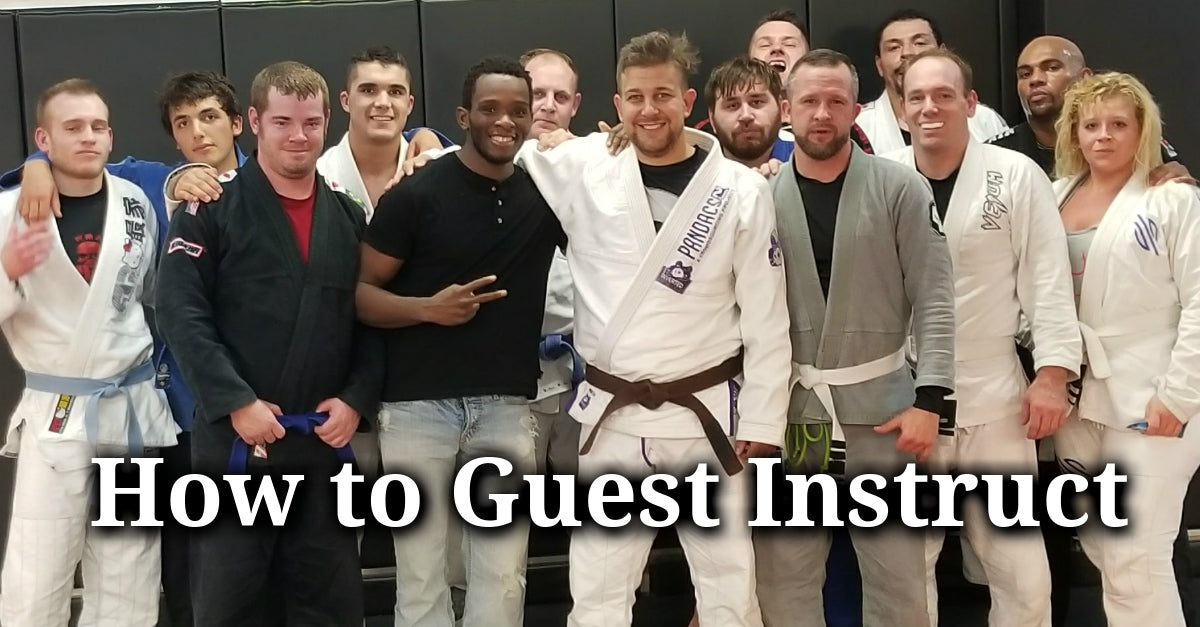
How to Guest Instruct
As you climb the ranks of Brazilian Jiu-Jitsu, your chances of having to fill in for an instructor go up as well. Under the best circumstances, your temporary upgrade from student to teacher will be shared with you beforehand, but veteran belts will likely grow accustomed to sometimes being the highest belt on the mat when the scheduled instructor simply does not show up to teach.
By default, you run the class when this happens.
The guest instructor format is equally freeing and restricting for the same reason: You get one class to teach. That means you will not be able to cover a grand curriculum that explores every depth and nuance of your favorite position, but then again, you are only on the hook for one class, and the majority of the students present will recognize that they are in for a one-off experience.
Before we delve into how to teach technique in this scenario, let’s start with some general tips about running the class as a whole:
- If multiple upper belts are present for class, suggest that you collaborate on teaching, perhaps each picking a move from a position and building on each other’s instruction. These classes can be a fun way to uncover new techniques or new details, and it spreads the pressure of teaching out across multiple instructors.
- Feel free to put a personal twist on the traditions of the class, like a different warm-up movement or opening drill, but try not to stray too far from the established format. You will likely end up spending more time getting the class to understand how you want them to do push-ups instead of something that could be more meaningful and useful.
- If you are not close with the instructor your are covering for, consider preempting your instruction with a disclaimer that you respect the instructor but that you may teach a move differently from how he or she has shown it before. You are not suggesting that the other way is the wrong or that your way is better. You are simply sharing a different perspective and once class concludes students are welcome to do the move however they like.
- If you cover a class as a guest instructor, having everyone roll for the entirety of the class is cheating. This is not open mat. Do your best to contribute something helpful in terms of instruction.
- Don’t put too much pressure on yourself. Most students will recognize that teaching is not your normal gig, and they will give you more patience than you might expect and will forgive missteps or nervousness.
With those general guidelines in mind, here are some suggestions for the actual instruction part of the class:
I like to keep an emergency lesson plan in the back of my mind if I ever have to teach unexpectedly. It’s a simple collection of three moves that I am deeply familiar with, are accessible for beginners, and chain together in an interesting way so that more advanced students can get something out of the class too. If you have a free 30 minutes on a commute, brainstorm what your three moves will be.
If you are not used to instructing, over-teaching is easy to do. Limit yourself to this simple structure until you get comfortable: Show the move all the way through at near-live speed (this is what we are going to do). Show the move again with a step by step breakdown of how to execute the technique (these are the basics of how to do the move). Show the move a third time, pausing to highlight common mistakes or misconceptions (these are the points where people usually struggle and this is how to not struggle). Then do a finally run through that reviews the basics that you covered in round two with a few key highlights of points that should not be forgotten (and this is the last review incase you glossed over in the six minutes I was talking).
If you are a new instructor, simple techniques are the best starting points. If you dive too deep into an advanced concept, you ramp up the difficulty for yourself as the instructor. Start with a five-step movie that a white belt can do to get comfortable and to feel out the room.
Don’t forget to have fun and to laugh. Being an instructor, even for a day is a challenge, but it’s okay to not take yourself too seriously. Teaching is a skill that improves with practice, so give yourself the runway you need to gradually improve over time.
Other articles:
Quick links
Contact us
About us
Quality BJJ gear at fair prices, available all year. Founded in 2012 to provide an alternative to high-cost, limited edition gis. Dive into the BJJ lifestyle with us—join the Panda Nation!"
